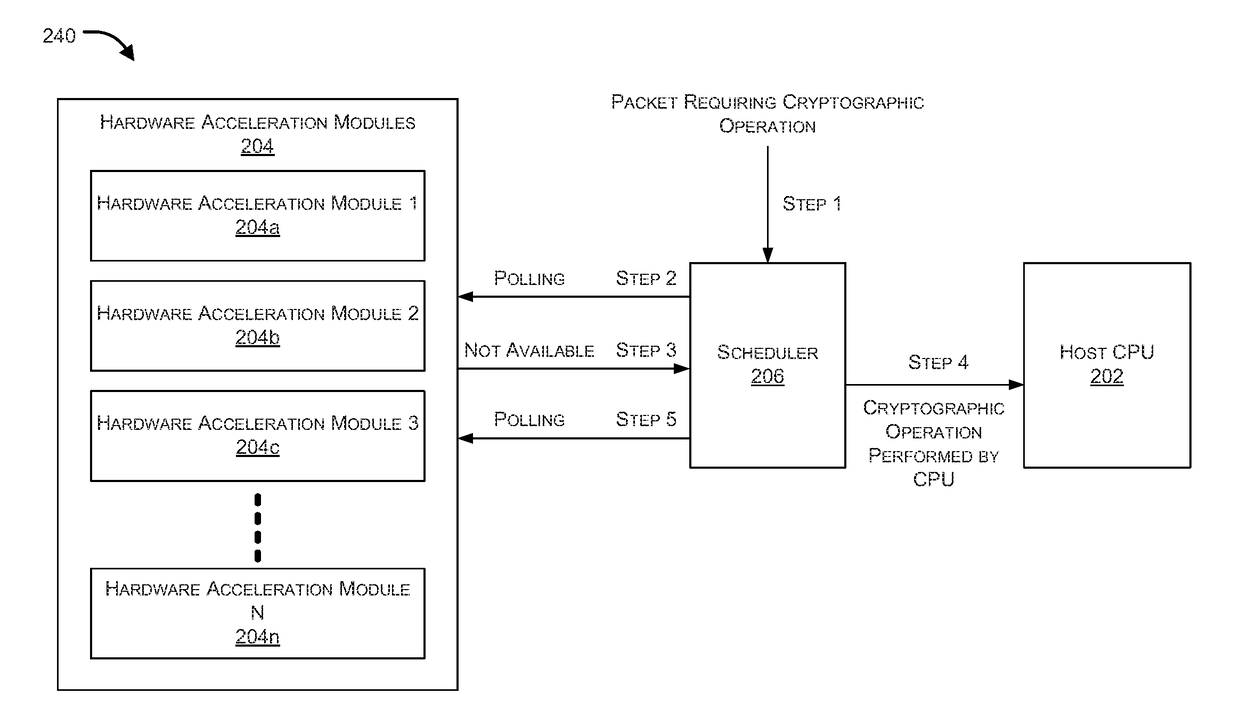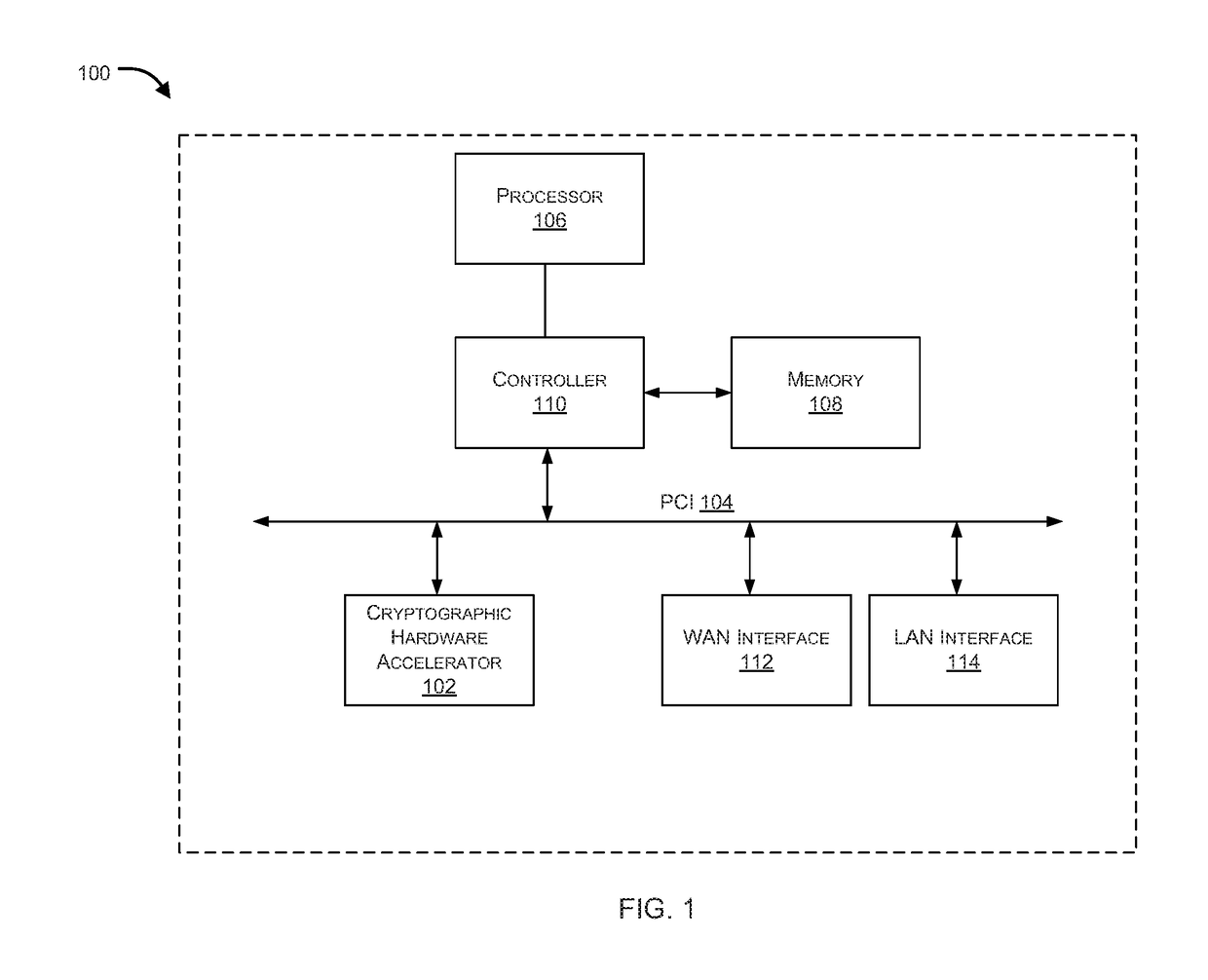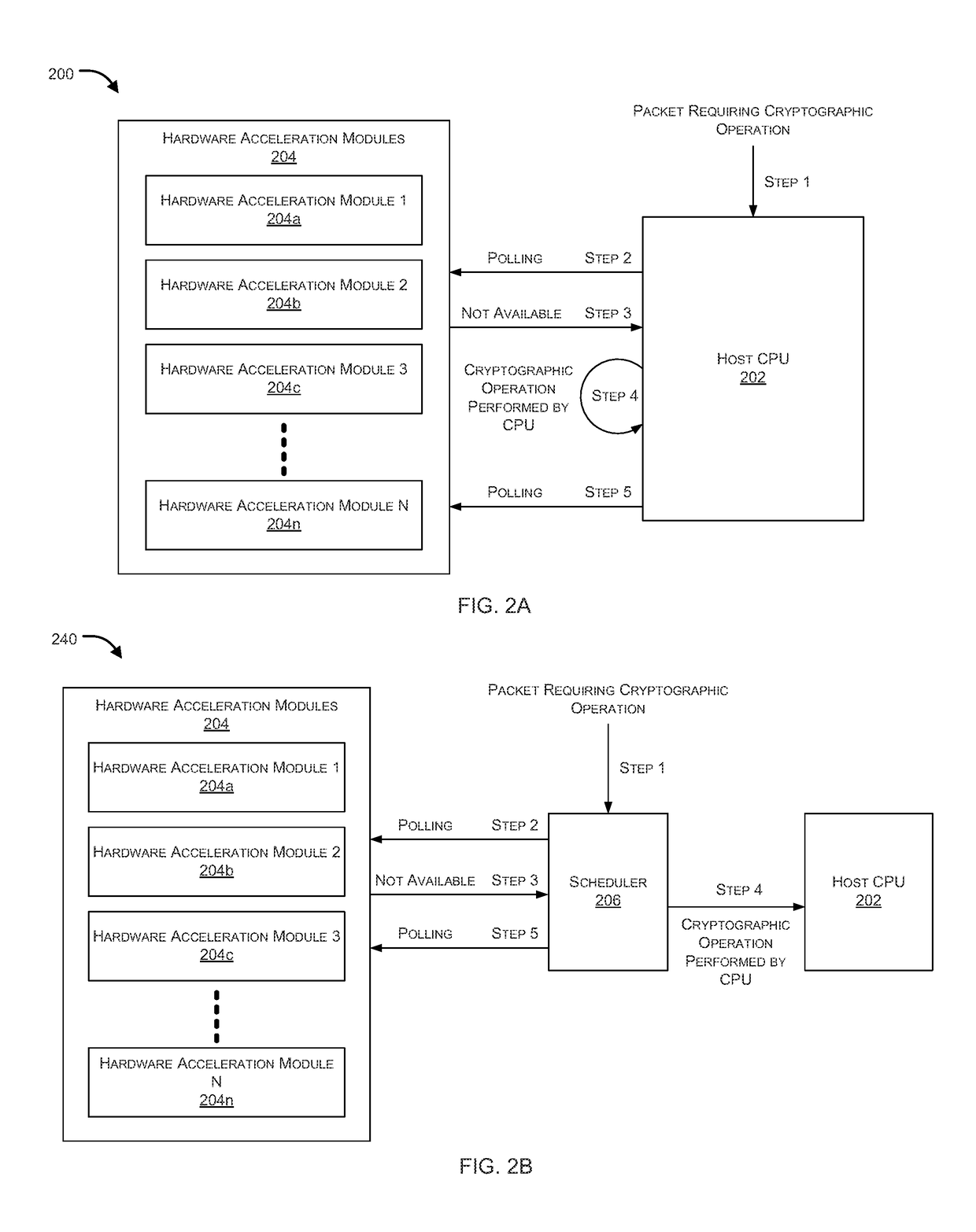Dual-mode processing of cryptographic operations
a cryptographic operation and dual-mode technology, applied in the field of computer security, can solve the problems of insufficient general purpose cpu to perform both its own task and cryptographic task simultaneously, and the use of cpu resources is not optimal,
- Summary
- Abstract
- Description
- Claims
- Application Information
AI Technical Summary
Benefits of technology
Problems solved by technology
Method used
Image
Examples
Embodiment Construction
[0016]Systems and methods are described for dual mode hardware acceleration for cryptographic operations. In accordance with embodiments of the present invention, the host CPU selectively uses both available hardware acceleration modules and native hardware supported cryptographic instructions (e.g., Intel Corporation's AES New Instructions (AES-NI)), if available, to enable more efficient utilization of computational resources. For example, in one embodiment, if the host CPU has native hardware supported cryptographic instructions, instead of continuing to poll the dedicated hardware acceleration modules for available resources when they are busy, the CPU can selectively perform the cryptographic operations directly, thereby greatly reducing the CPU cycles wasted on polling and increasing the number of cryptographic operations that can be performed within a period of time.
[0017]In the following description, numerous specific details are set forth in order to provide a thorough unde...
PUM
 Login to View More
Login to View More Abstract
Description
Claims
Application Information
 Login to View More
Login to View More - R&D
- Intellectual Property
- Life Sciences
- Materials
- Tech Scout
- Unparalleled Data Quality
- Higher Quality Content
- 60% Fewer Hallucinations
Browse by: Latest US Patents, China's latest patents, Technical Efficacy Thesaurus, Application Domain, Technology Topic, Popular Technical Reports.
© 2025 PatSnap. All rights reserved.Legal|Privacy policy|Modern Slavery Act Transparency Statement|Sitemap|About US| Contact US: help@patsnap.com



